
New York’s Housing Insecurity By The Numbers
U.S. Congress, New York State, and New York City policymakers are in the process of developing a financial package with programs that will provide emergency housing assistance to address the impacts of the COVID-19 crisis on housing stability and the housing market. To help inform these efforts we’ve outlined the following key information about New York City and New York State households and provides context for New York’s unique housing market.
Even before the crisis, the pre-existing needs in NYC were substantial. Many households in New York City were already at risk of housing instability.
1,785,000 New York City households had earnings below $75,000 in 2018.
About 900,000 New York City households had earnings below $30,000 in 2018. An additional 885,000 households earned between $30,000 and $75,000, and 320,000 households had earnings between $75,000-$99,000.
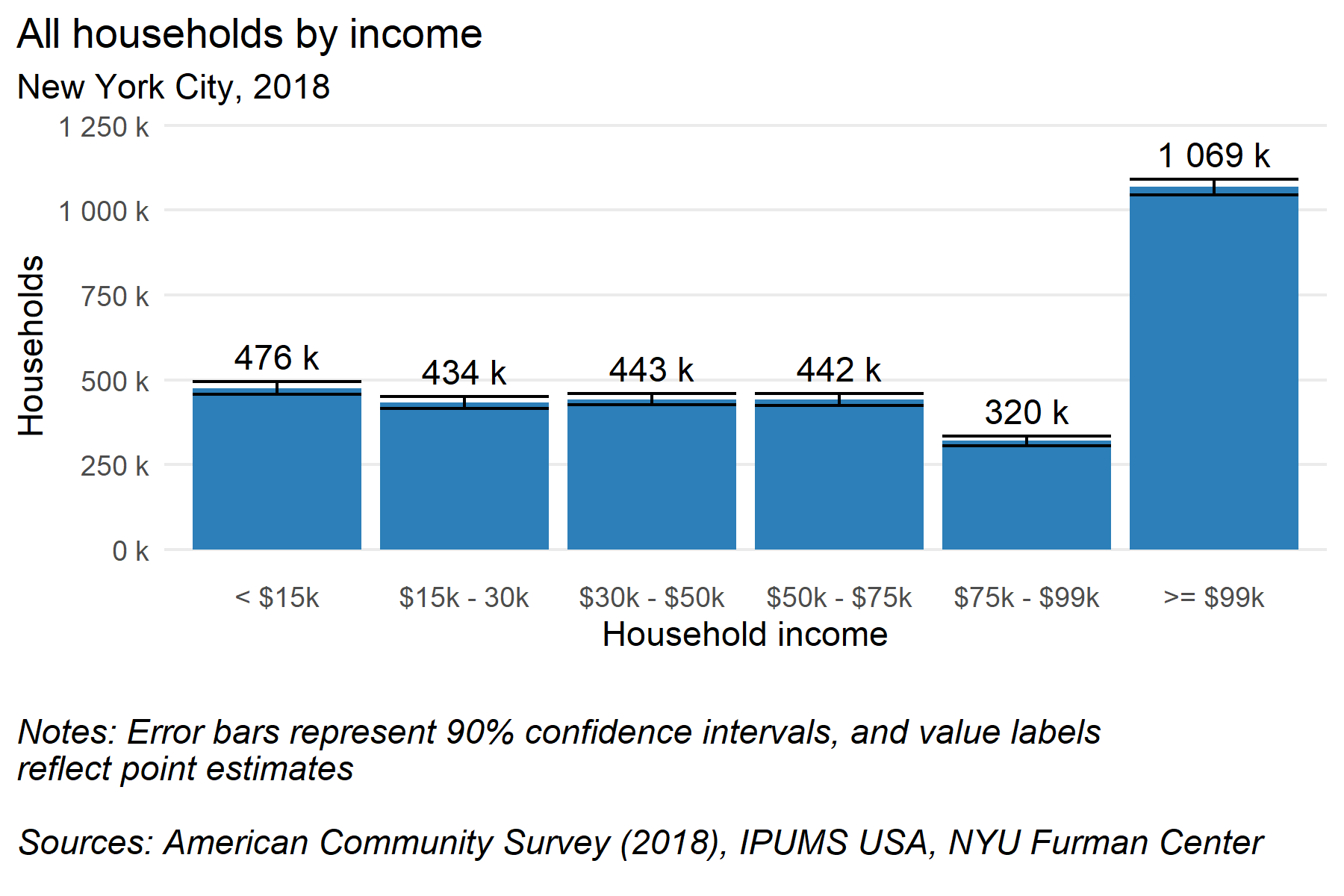
Lower income renters that pay a majority of their income toward rent are particularly vulnerable to housing instability.
The combination of severe rent burden, lost wages, and little to no emergency savings is likely to result in large-scale housing instability. In New York State, nearly three quarters of renter households with annual incomes below $15,000 paid more than 50 percent of their income toward rent (severe rent burden) in 2018. 53 percent of renter households that earned between $15,000 and $30,000 were severely rent burdened, as were 20 percent of those earning between $30,000 and $50,000.
In New York City the percentages were similar for low-income households, however, households with moderate incomes (up to $50,000 annual income) were more likely to be severely rent burdened. Over 25 percent of New York City renter households with earnings between $30,000 and $50,000 were severely rent burdened in 2018. Households paying so much of their income towards rent are at particular risk of housing instability due to the expected wage shock.

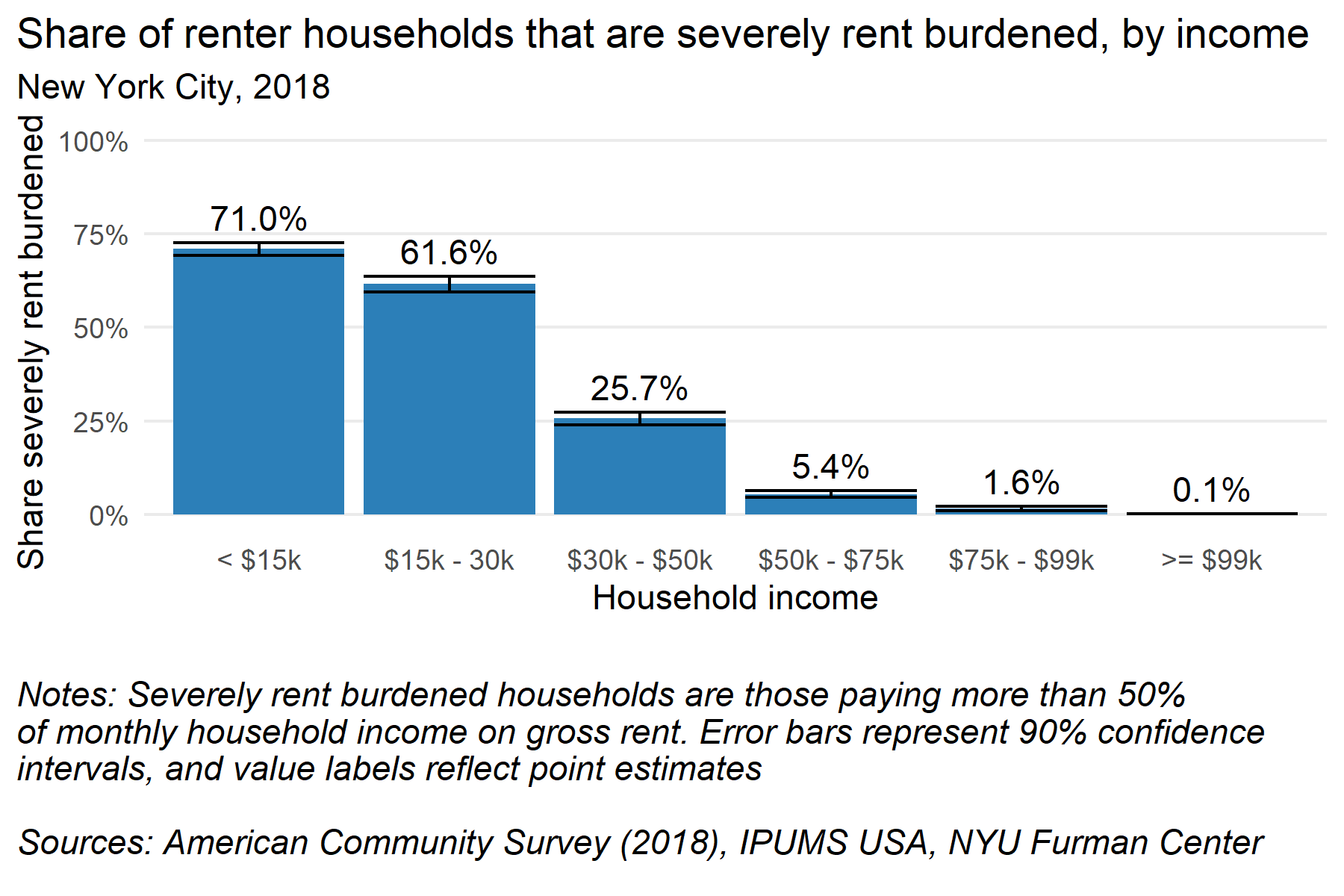
Over the past year, an average of 59,046 New Yorkers stayed in the New York City homeless shelter system each night.
About 60,000 people sleep in New York City shelters each night. Between April 1st, 2019 and March 17, 2020, New York City averaged a total of 31,048 households in its shelter system. This summed to a total of 59,046 individuals living in shelter. Of all individuals, 16,601 were single adults. 37,180 were individuals in families with children, and 5,265 were individuals in families without children.
These figures come from DHS operated shelter data from April 1st, 2019 – March 17th, 2020 collected from NYC Open Data (it does not include private shelter operator data). To calculate the monthly averages, we averaged (arithmetic mean) the daily reports for each month. The yearly average is the mean of the monthly averages (not the mean of each individual day within our target timeframe).
Individual data contain the variables regarding the count of individuals within the shelter system (count of individuals in families with children, count of individuals in families without children, and single adults).
Household data contains the variables regarding households (families with children and adult families) and single adults within the shelter system.
Data Source: https://data.cityofnewyork.us/Social-Services/DHS-Daily-Report/k46n-sa2m
As COVID-19 continues to spread, a much broader range of households may experience health and/or economic challenges that can put them at risk of housing instability than those historically considered vulnerable. Policymakers should anticipate that the crisis may impact households who were previously secure, and build in flexibility to serve all populations who are impacted.
New York City and New York State renters have a wide range of incomes - policymakers could target different forms of renter assistance to a broader range of households.
Nearly half of New York City renters earned more than $50,000 in 2018. Of those renter households, about 300,000 had earnings between $50,000 and $75,000, and 200,000 households had earnings between $75,000 and $99,000. Across New York State, about 814,000 households had earnings between $50,000 and $99,000. Attaching strict means testing requirements to housing assistance programs based on prior earnings may miss a large number of renters newly at risk of experiencing housing instability. Without savings, these households will also be vulnerable to falling behind on rental payments.
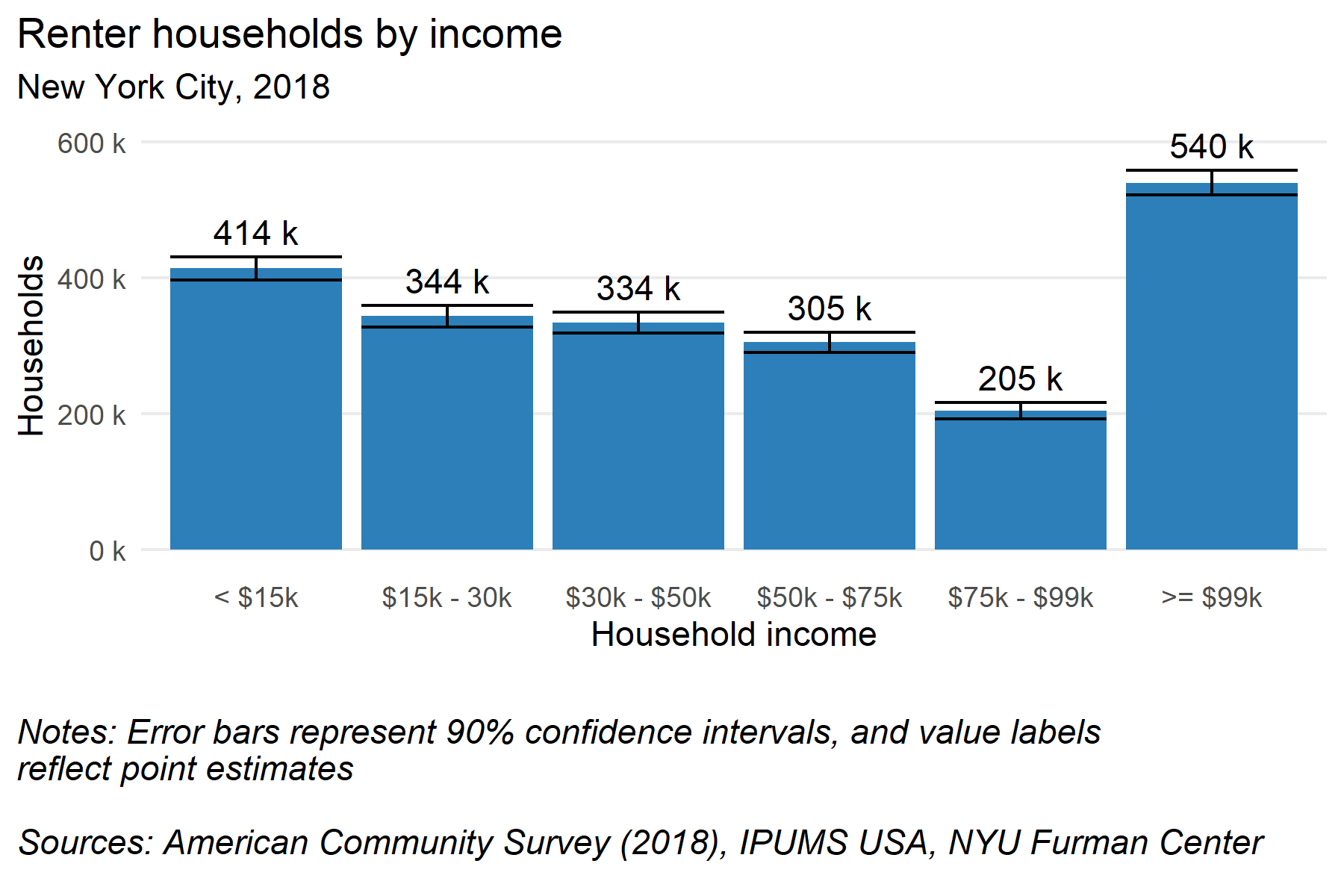
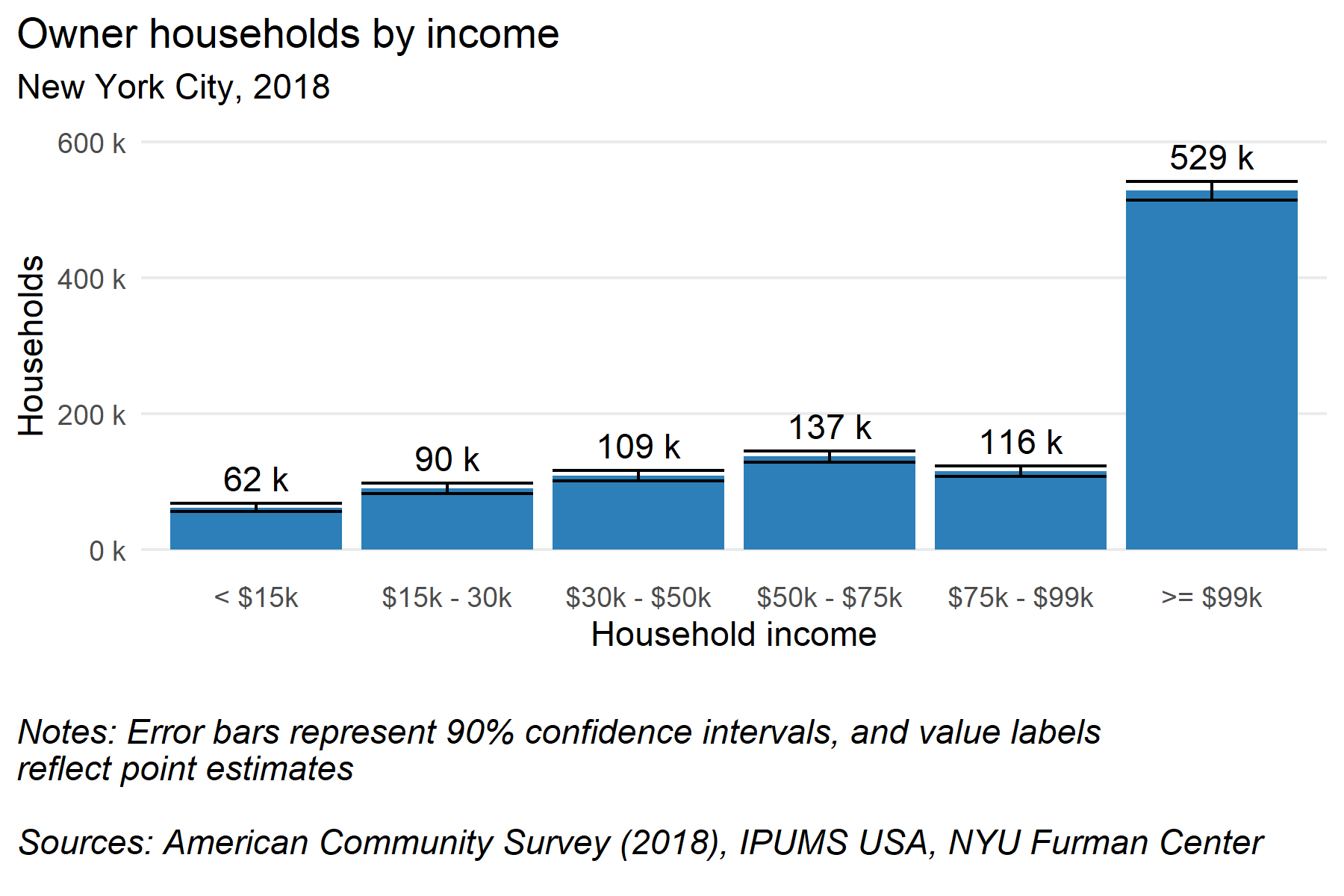
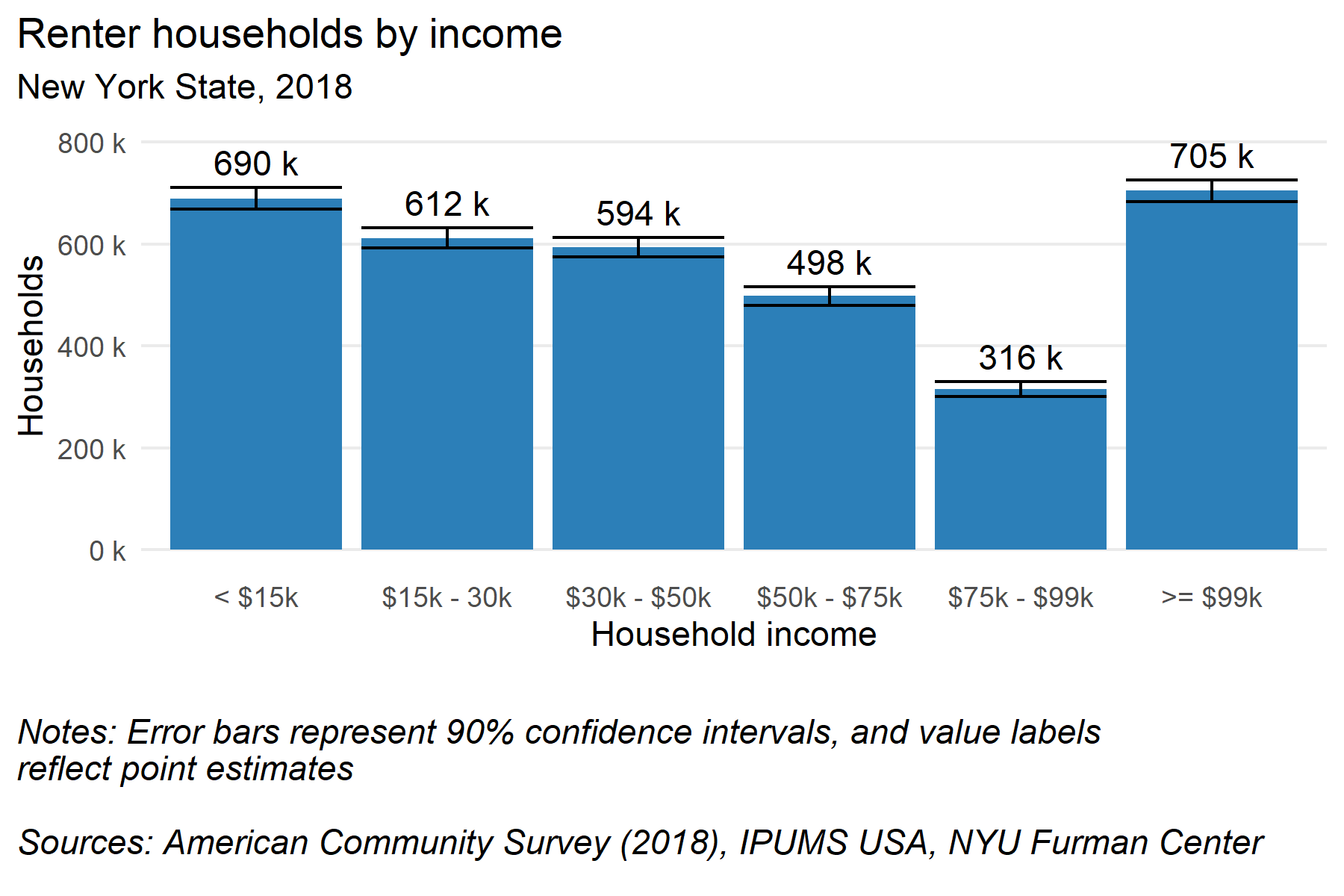
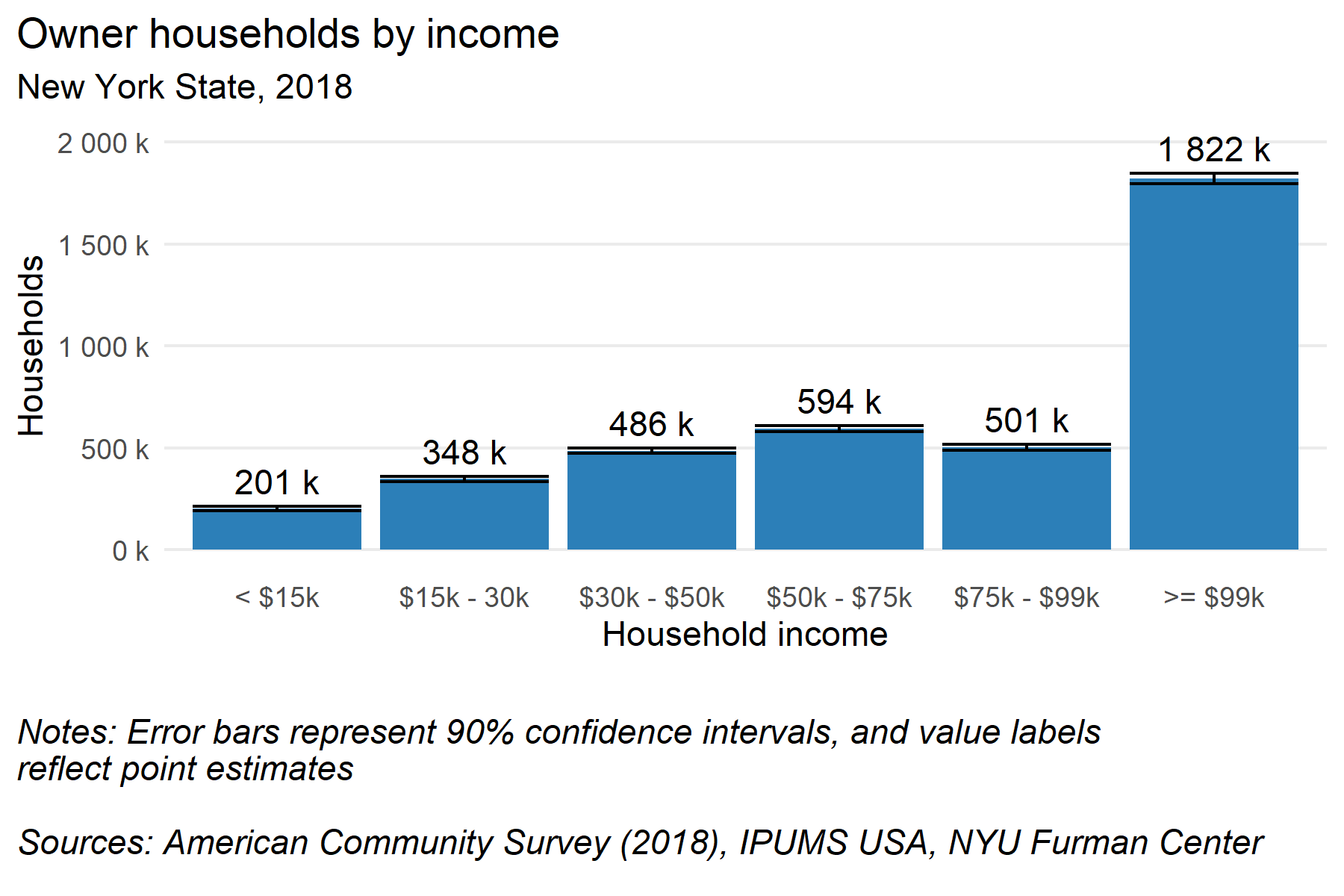
Direct cash assistance will be valuable to affected households, but the assistance will not go as far in New York City as in other parts of the country.
The median gross monthly rent for New York City renters with incomes between $30,000 and $50,000 is $1,290, and $1,500 for renters with earnings between $50,000 and $75,000. If households receive, for example, a $2,500 one-time payment, that would not be enough to cover about two months of rent payment for the median household with an income between $30,000 and $75,000.
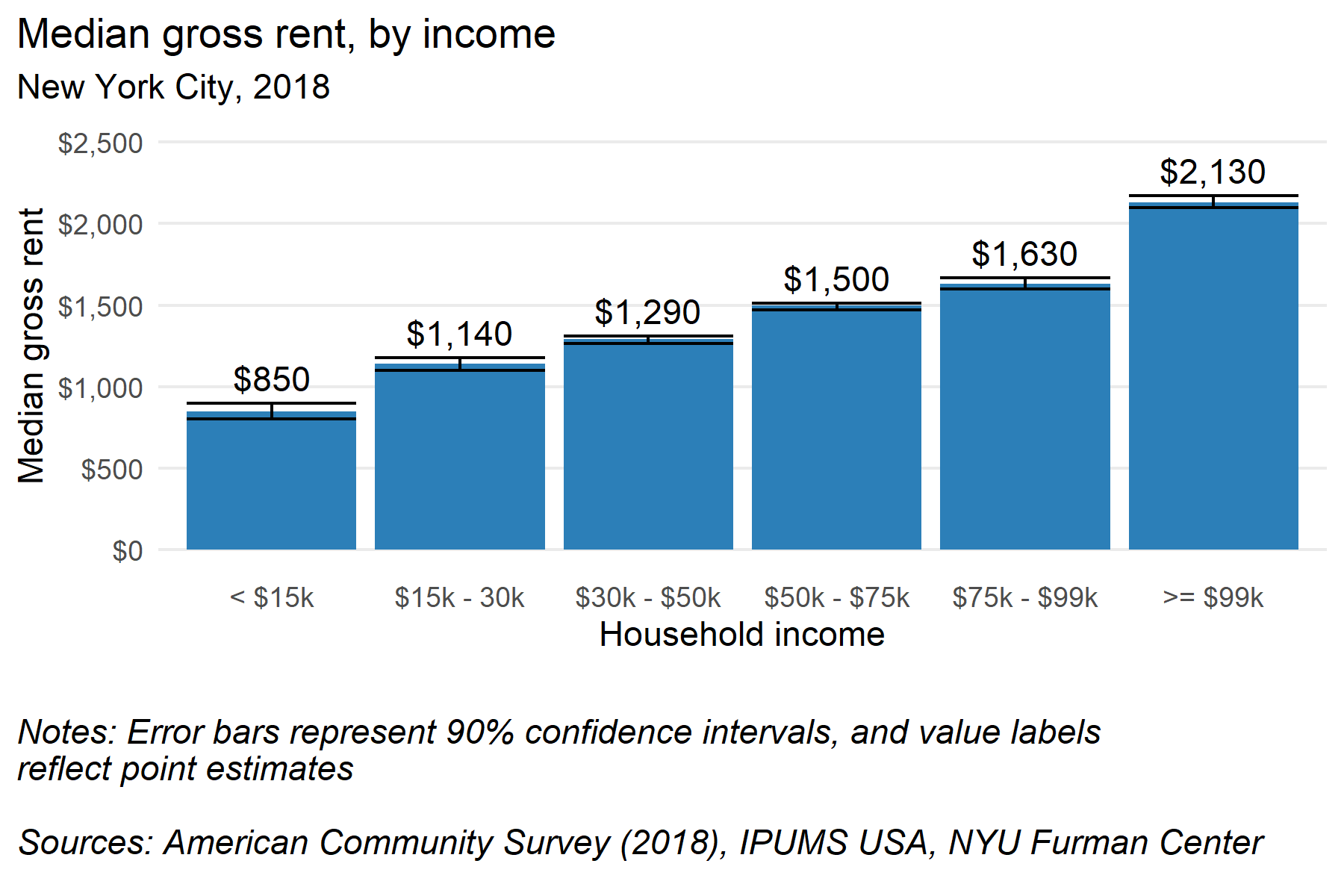

Rental arrears may pose particular challenges for owners of small rental properties.
About 20 percent of New York City renters live in 2-4 unit buildings. Across the nation, 34 percent of renters live in single-family homes, with an additional 17 percent in 2-4 unit buildings. Rental arrears may pose particular problems for owners of smaller buildings, placing those owners at risk of maintaining mortgage payments.
| Share Renters | 1 Unit | 2-4 Unit | |
|---|---|---|---|
| NYC | 67.2% | 4.0% | 20.5% |
| NYS | 46.3% | 11.9% | 25.0% |
| US | 36.1% | 33.6% | 17.4% |


